What is Flash Chromatography?
What is Flash Chromatography & How does it work? Part 3 of our “What is Chromatography?” series
Unlike in thin layer chromatography, which uses a piece of chromatography paper or glass slide covered with silica gel as the stationary phase, In flash column chromatography, the chemist applies a chemical compound on top of a bed of silica gel or other material (stationary phase) loaded in a glass column. A solvent mixture (mobile phase) is poured over the sample and it is carried under pressure through the vertical column of silica gel, “eluting" the sample (separating it into its individual components.
In flash chromatography, invented by organic chemist W. Clark Still in 1978, the compound is pushed down through the column using air pressure or, more recently, using a solvent pump, to accelerate solvent flow and achieve superior chemical separations in less time and at higher resolution than traditional, gravity-based column chromatography.
The advantages of using automated flash chromatography are many. It's easy, fast, relatively inexpensive, requires minimal development time, uses less solvent and offers more exacting results. These advantages make flash one of the most popular techniques for purifying pharmaceutical intermediates, as well as final organic products. It is also widely used in natural products research.
In addition, automated flash offers green advantages over manual flash columns, as automated systems can deliver changing solvent composition more easily than in manual methods. This enables users to vary the solvent composition and increase the gradient strength throughout the run, forcing strongly retained compounds to elute off the column more quickly.
How does flash column chromatography work?
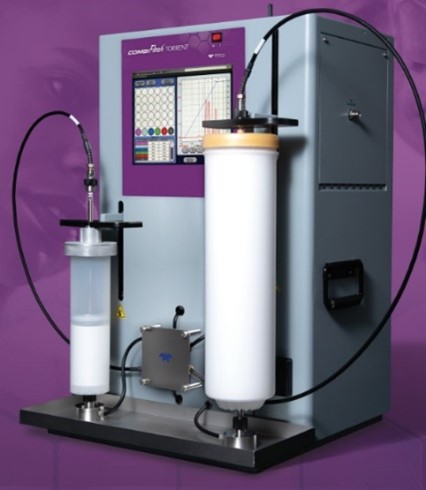 Today, Flash Chromatography is a completely automated preparative technique influenced by the CombiFlash® equipment designed and manufactured by Teledyne ISCO. Modern flash chromatography systems use pumps to replace the air pressure, detection, and fraction collection in a single package.
Today, Flash Chromatography is a completely automated preparative technique influenced by the CombiFlash® equipment designed and manufactured by Teledyne ISCO. Modern flash chromatography systems use pumps to replace the air pressure, detection, and fraction collection in a single package.
In the photo at right is a CombiFlash Torrent large scale flash chromatography instrument. The smaller cartridge on the left is loaded with the sample to be purified. The large column on the right contains silica gel (the stationary phase).
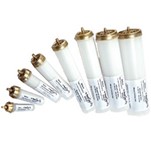 Teledyne ISCO's disposable RediSep® columns for flash chromatography are precision-packed for high resolution and reproducibility. They come in a variety of sizes, from 0.5 to 5 inches in diameter, and 2.4 to 16.25 inches in length.
Teledyne ISCO's disposable RediSep® columns for flash chromatography are precision-packed for high resolution and reproducibility. They come in a variety of sizes, from 0.5 to 5 inches in diameter, and 2.4 to 16.25 inches in length.
Now, let's go with the flow:

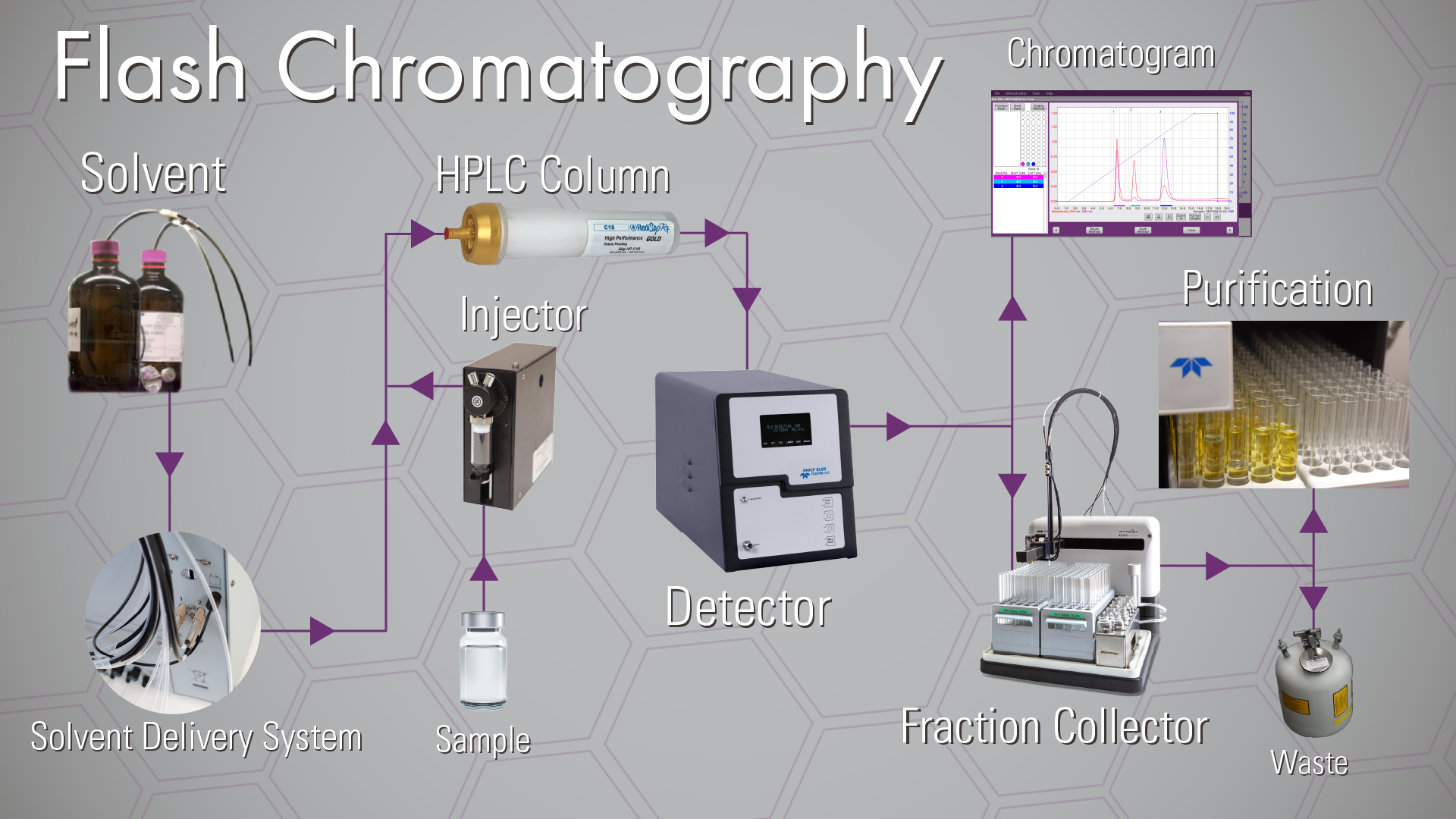
About the detector, chromatogram, and fraction collection

 Once the desired compound in the test sample elutes, or separates, the individual compounds are ready to flow to the detector. The prevalent type used in column chromatography work is ultraviolet light. Because each compound absorbs a different wavelength of UV light, each compound has its own “signature." The UV reading is sent to a computer, where a graph of the sample's components is generated.
Once the desired compound in the test sample elutes, or separates, the individual compounds are ready to flow to the detector. The prevalent type used in column chromatography work is ultraviolet light. Because each compound absorbs a different wavelength of UV light, each compound has its own “signature." The UV reading is sent to a computer, where a graph of the sample's components is generated.
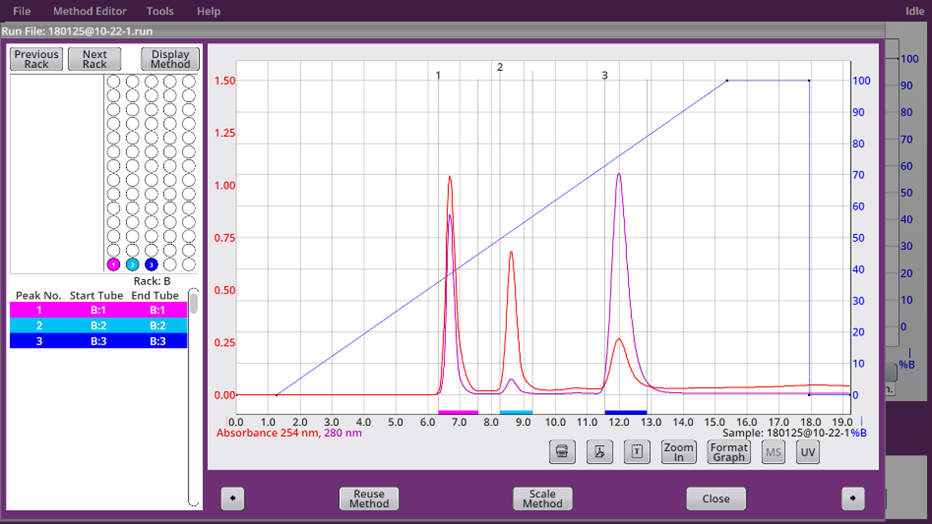
The UV signal for each component in the sample is displayed as peaks on a graph. In this instance, the highest peak is the target compound we're looking to purify and isolate. The others are impurities we want to avoid in our purified sample. Instruments from Teledyne ISCO have the computer and screen built right into the unit, saving lab space otherwise taken up by a separate system.
As the compounds are detected via UV light, the signal can then be used to trigger fractionation in test tubes using a fraction collector. Once each compound is isolated in a tube, the solvent can be evaporated, leaving only the compound itself. That isolated, purified compound can then be used for developing and manufacturing foods, pharmaceuticals, and many other things.
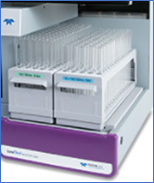
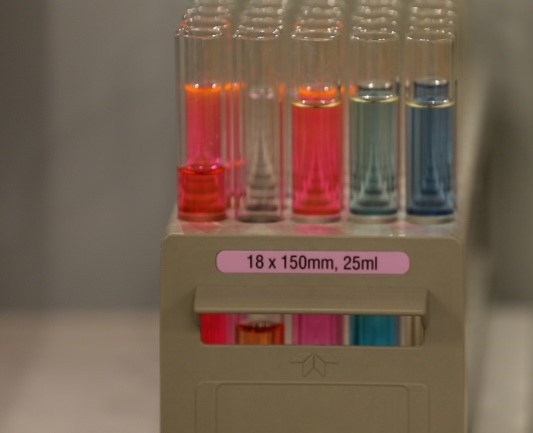
Correlation Between TLC and Chromatograph Readings
Effective Organic Compound Purification Handbook: Guidelines & Tactics for Flash Chromatography
 Download your free copy of our flash chromatography handbook here. This 150-page book provides a deep understanding of flash chromatography and is of value to all skill levels, from beginner to expert.
Download your free copy of our flash chromatography handbook here. This 150-page book provides a deep understanding of flash chromatography and is of value to all skill levels, from beginner to expert.
CombiFlash® NextGen Systems
The CombiFlash NextGen line of systems takes the guesswork out of your purifications and increases productivity, whether you are purifying synthetic compounds, natural products, peptides, or polymers. Check out the CombiFlash EZ Prep to discover Teledyne ISCO's latest advances in chromatography, which offers Flash and Prep High-Performance Liquid Chromatography in one compact system. Learn more at
CombiFlash NextGen Systems.
Why Use Flash Chromatography?
Automated flash chromatography systems are used in the analysis and purification of a variety of compounds – synthetic compounds, natural products, peptides, or polymers, to obtain the desired compound derivative.
Be sure to check out the other blogs in this 4 part series:
